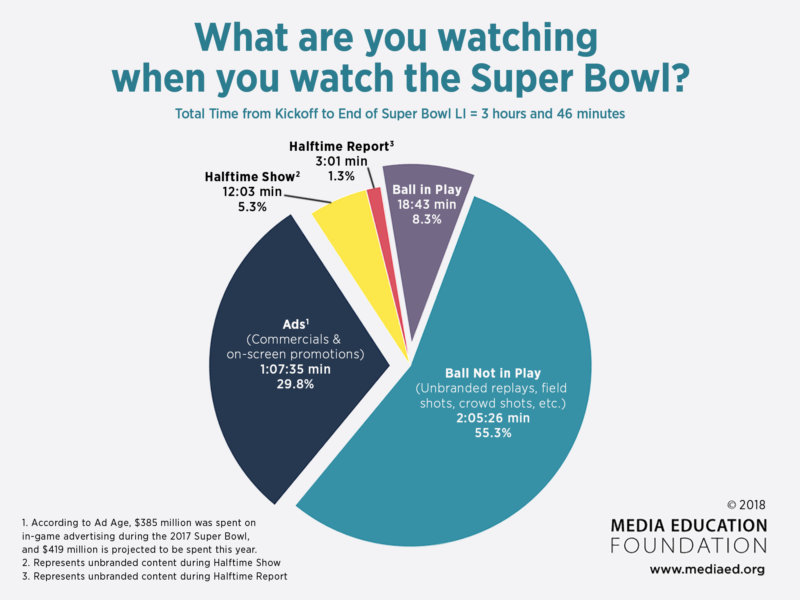What are you watching when you watch the Super Bowl?
More than 100 million Americans are expected to tune into the Super Bowl this Sunday. And if the past is any guide, the amount of time they’ll spend watching ads, promotions, and other commercial appeals will dwarf the amount of time the ball is actually in play.
The Media Education Foundation (MEF) crunched the numbers on last year’s Super Bowl, and found that over the course of the roughly four-hour broadcast, the ball was actually in play for a mere 18 minutes and 43 seconds, or roughly 8% of the entire broadcast. During the remaining 92% of the broadcast, a huge chunk was dedicated to ads, branded segments, and other corporate promotions.
“Pro football is a dream delivery vehicle for the advertising industry,” said MEF Executive Director Sut Jhally, the director of the new educational film Advertising at the Edge of the Apocalypse. “The ball isn’t in play a whole lot, and there’s a lot of standing around, so corporations have seized the opportunity to stuff their brands and pitches into all that available time and space. They’re constantly trying to sell you stuff during the game, while the commercial breaks themselves keep getting longer and longer. Especially during the Super Bowl.”
It’s projected that marketers will spend about $5 million for a 30-second spot during the Super Bowl this year, or roughly $66,000 per second, for a total of about $419 million on in-game advertising.
Given the sheer size and scale of this effort, Jhally sees the Super Bowl as an ideal opportunity for educators to talk about the wider impact of advertising and commercial clutter on the culture.
“The Super Bowl is only the most extreme example of a trend that’s been accelerating for a long time,” he said. “Over the past few decades, advertising has taken over more and more space in the culture, exposing us to corporate propaganda nonstop, whether we’re online, watching TV, or just walking down the street. So I’d argue we should be less interested in individual ads than in the cumulative force of advertising as a whole, in its cultural power and its capacity to frame the world through a consumer lens. I think the Super Bowl provides the perfect jumping-off point for educators to explore that bigger question with their students.”
For educators looking to explore these issues in their classes, MEF has a range of titles that look at the social and cultural impact of advertising and hypercommercialism — as well as the cultural politics of American sports. Check them out below!


